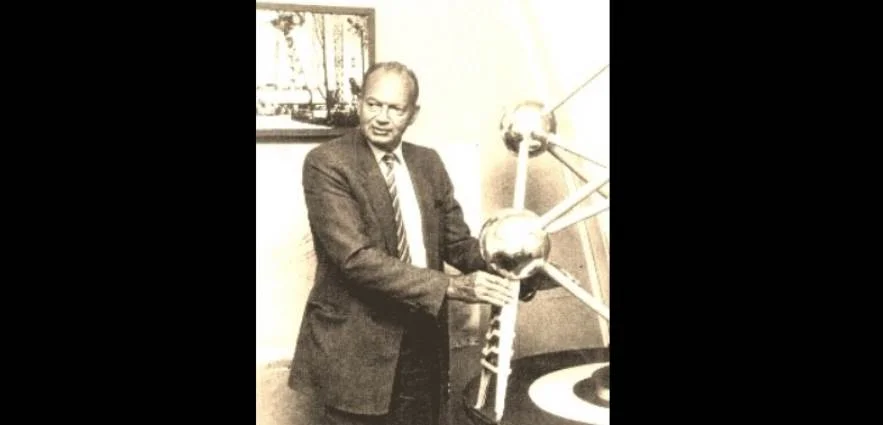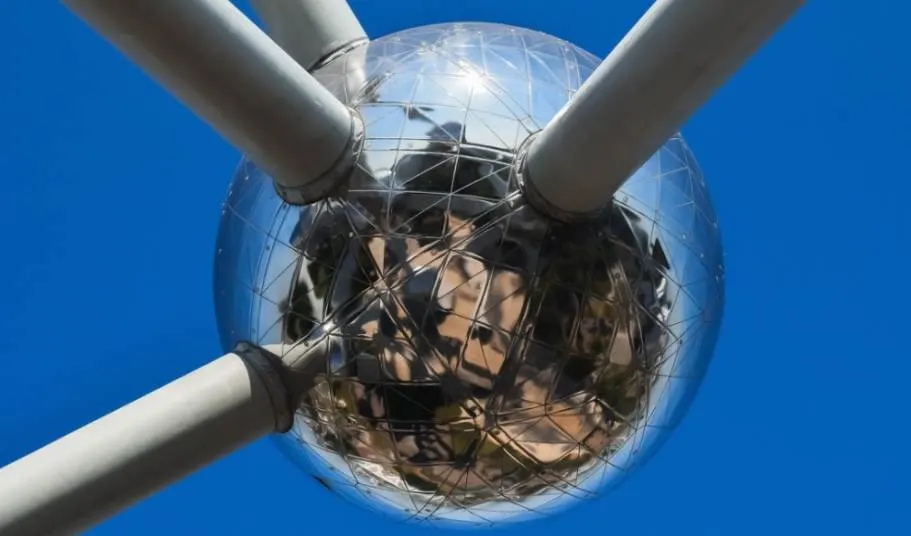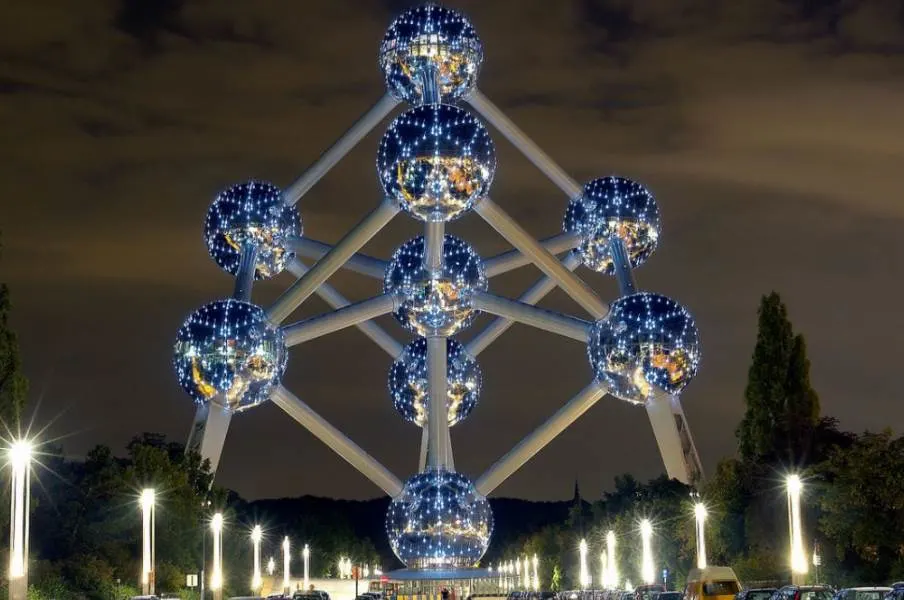Brussels is the capital of Belgium and Europe and is home to one of the most unique buildings in the world called the Atomium.
It’s a landmark building on the “Heysel Plateau” in Brussels, stands 102 meters (335ft) tall, and was built for the world expo in the city in 1958.
Its shape forms the shape of a unit cell of an iron crystal, magnified exactly 165 billion times.
Huge spheres of stainless steel measuring 18 meters (60ft) in diameter are interconnected by tubes of 3 meters in diameter (60ft), forming the complete structure called “The Atomium.”
In this post, You’ll discover some interesting facts about the Atomium, one of the most interesting structures in the world.
1. Why was the Atomium built?
The Atomium was built for Expo 58, which is also referred to as “The Brussel’s World Fair.”
To reflect the confidence in scientific research during the ’50s, a structure depicting atoms was chosen as the main attraction of Expo 58.
The site of Expo 58 covered a total of 2 kilometers and it took nearly 3 years for 15,000 workers to build all the attractions, of which the Atomium was the main one.
Some other interesting notes are that this was the first world fair that was held after World War II, the 11th to be held in Belgium and the 5th to be held in its capital Brussels.

Expo 58 also replaced the traditional 25-year celebration of Belgium’s independence in 1955 Which increased the budget for it.

2. Who created the Atomium?
In 1954 the decision was made to assign André Waterkeyn and architects André and Jean Polak with the task of creating the design for the Atomium.
He was asked just one thing: Create a building that would symbolize Belgian engineering skills.
We believe André did a good job, as the Atomium is one of the more remarkable structures in modern architecture.

3. Construction of the Atomium
First of all, the Atomium wasn’t meant to be a building that would dominate the Brussels skyline forever. The original idea was to keep the Atomium up for about 6 months after the Expo of 58.
Because the structure was so popular, year after year the decision was made to postpone its demolition.
The structure itself is was an amazing piece of engineering at the time. The fact that 6 of the 9 spheres need to be open to the public made it more complicated as safety needs to be ensured.
An interesting one of the facts about the Atomium is that the original design didn’t call for additional support. During wind tests, however, they discovered the building would collapse when there were winds of just 80 kilometers per hour (50mph).
Therefore, additional support needed to be placed to prevent a catastrophe.

4. Spheres of the Atomium
Out of the 9 spheres of the Atomium, 6 can be accessed by the public. the reason is the lack of support and the inability to provide enough safety measures for people to enter 3 of the top spheres.
The 6 spheres that are accessible contain:
- Bottom sphere: Museum dedicated to the Expo of 58, the ’50s in general and the construction of the Atomium.
- Second sphere: This sphere is used for temporary exhibitions.
- Third and central spheres: Here companies or organizations can hold all sorts of events.
- The sixth sphere: Specially designed for children. All sorts of events for children from the ages of 6 to 12 are held here and even allows children to spend the night.
- Top sphere: Provides a unique panorama view of the city of Brussels, and also has a restaurant.
It’s also worth noting that every sphere of the Atomium contains 2 floors and one bottom floor reserved for service.

5. Fastest elevator in the world
At the time that the Atomium opened its doors back in 1958, it contained the fastest elevator in the world.
Through the central tube, up to 22 people were able to reach the top sphere of the building in about 23 seconds.
The lift can reach a maximum speed of 5 meters per second (20ft per second).
The escalators leading to the side-spheres that can be accessed by people are some of the longest in Europe as well. One of them is nearly 35 meters long (100ft).

6. Serious renovations
In the early 2000s, the building that was once the shiny symbol of the advanced engineering capabilities of Belgium had deteriorated severely.
Renovation works started in 2004, the new Atomium was officially opened on 14 February 2006.
During the renovation, the Atomium remained closed for the public.
Apart from attaching new stainless steel plates to the surface of the spheres and tubes to make them shine once again, led lighting inside of the spheres was added as well.
This allows the Atomium to produce quite a spectacular light show at night.

7. Mini-Europe located just next to it
Literally at the foot of the Atomium, located in what’s called the “Bruparck,” you can find a park called “Mini-Europe.”
In Mini-Europe you can find scale models of all the most important landmarks and buildings in the European Union at a scale of 1:25.
There are a total of 350 buildings in over 80 countries.

